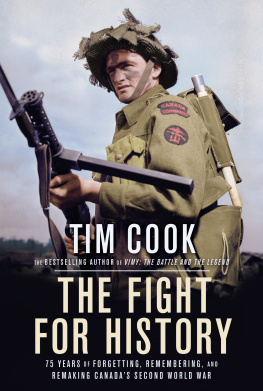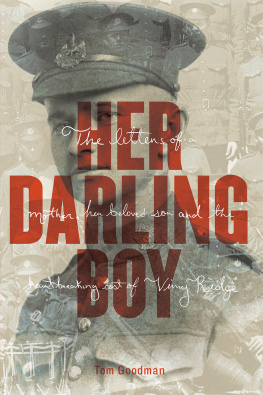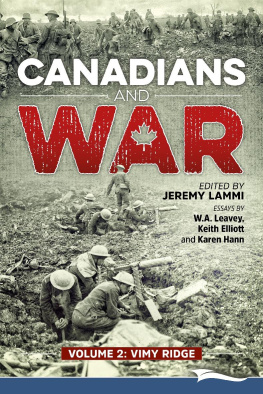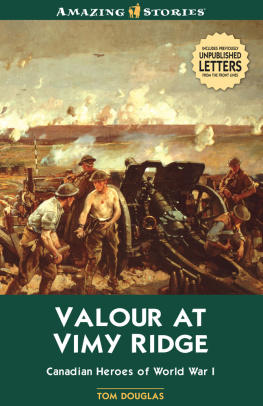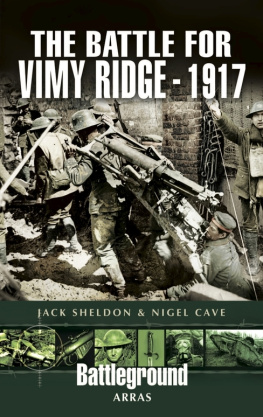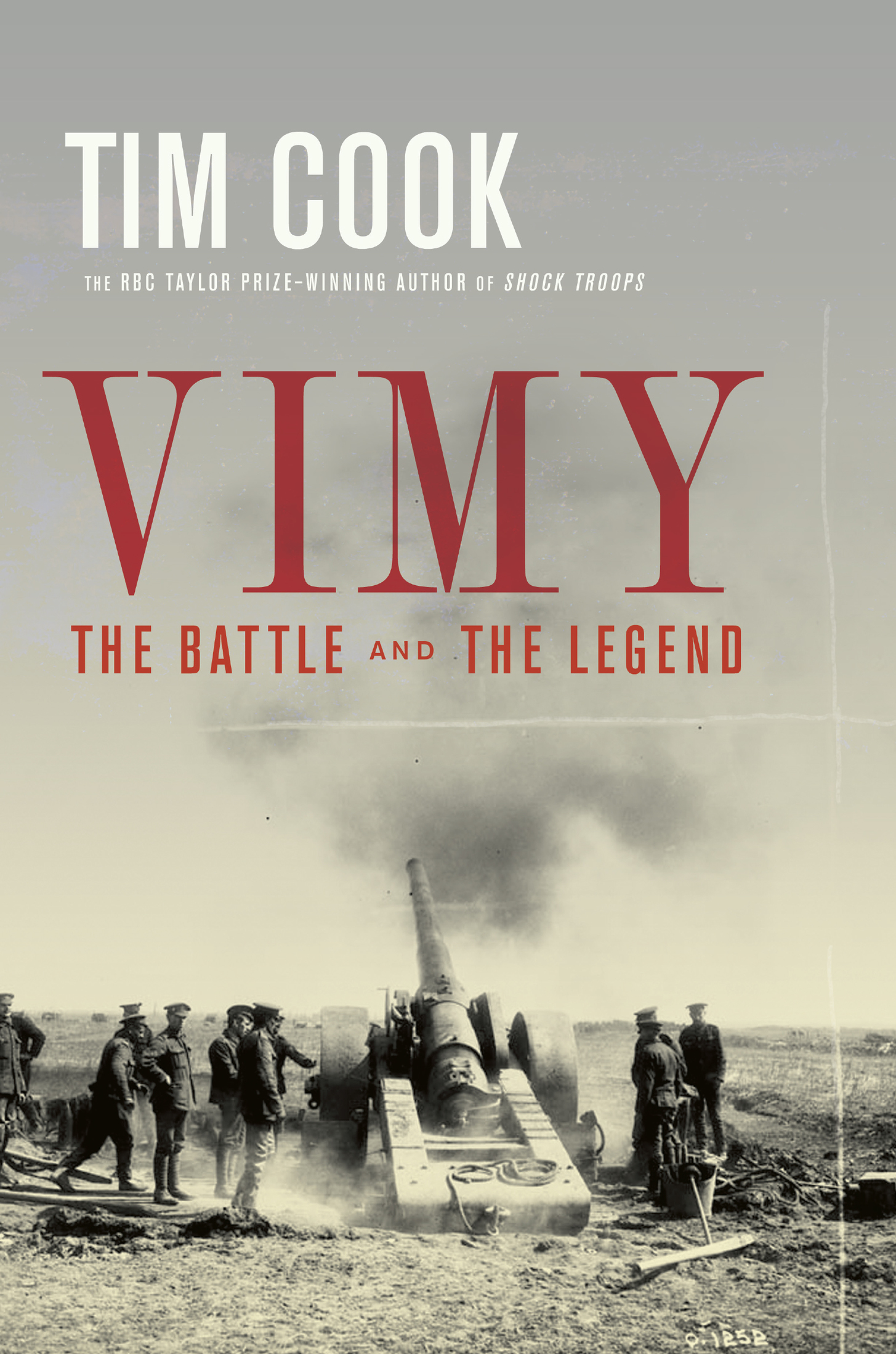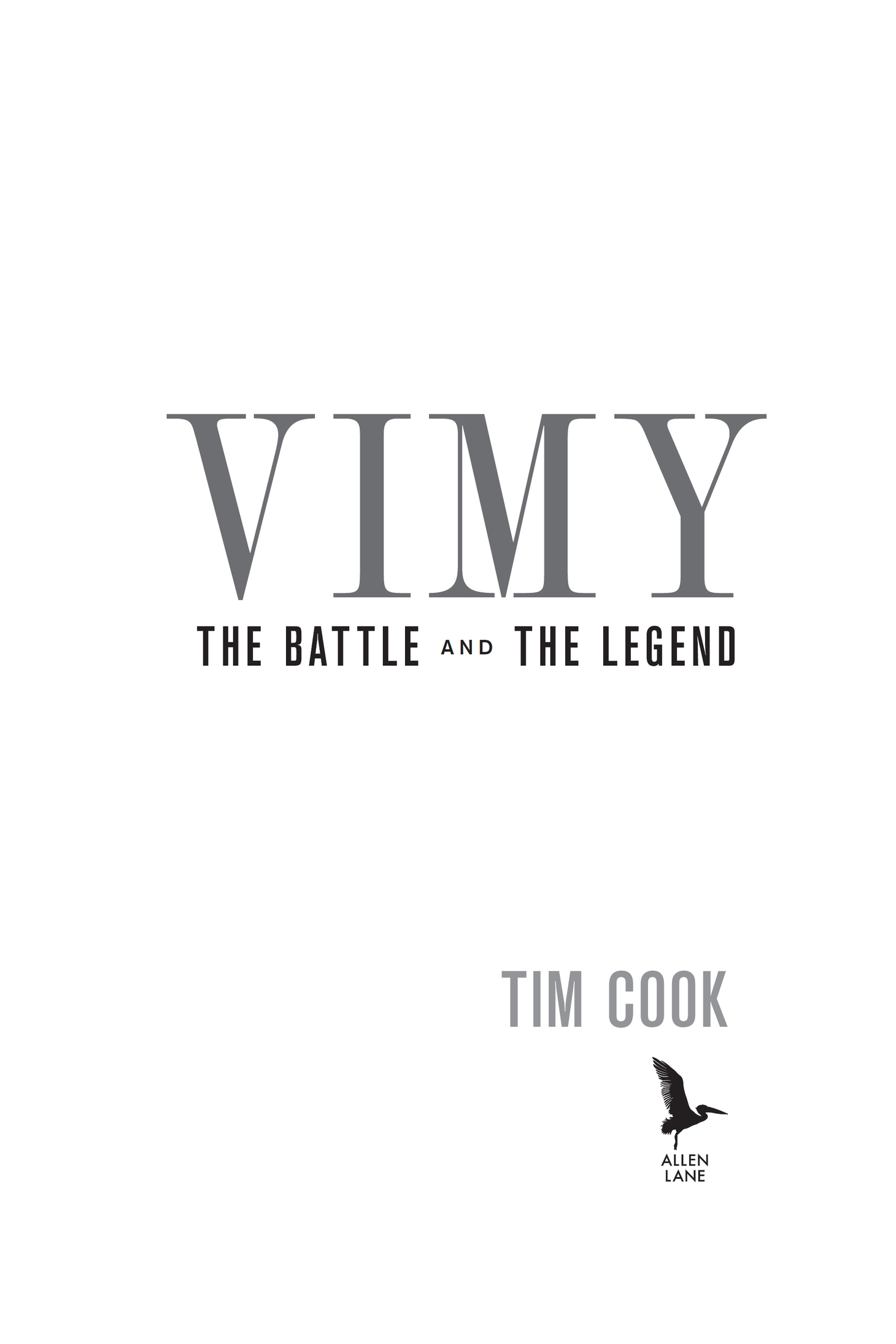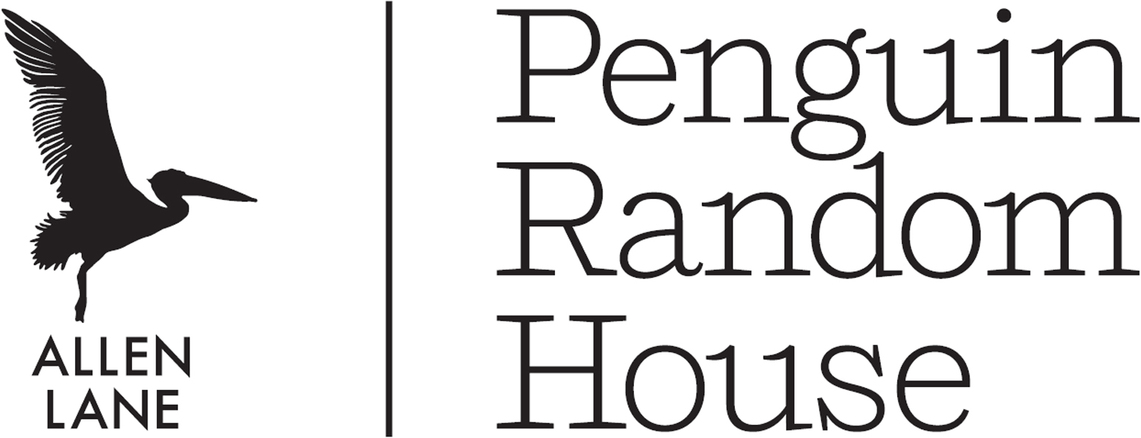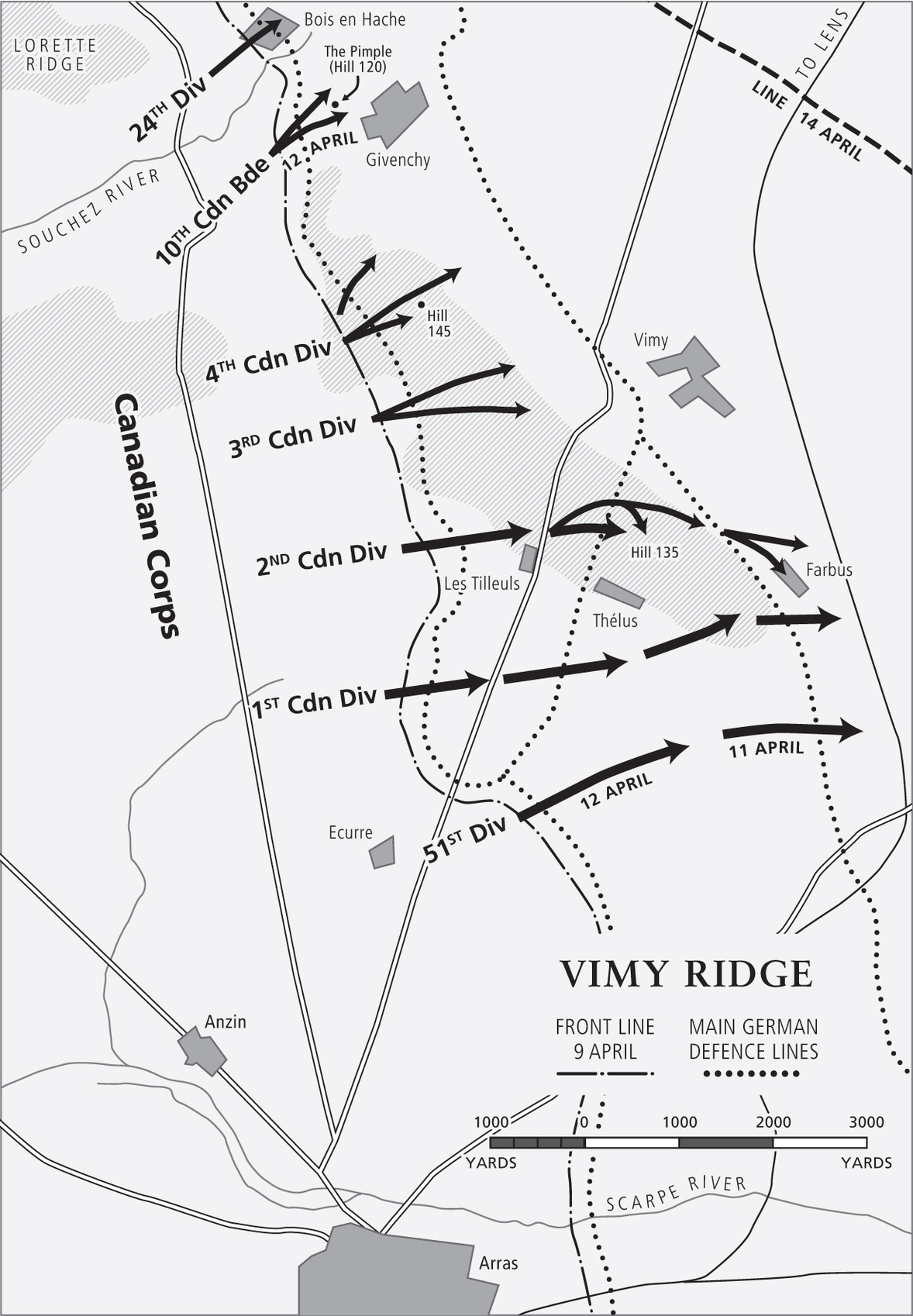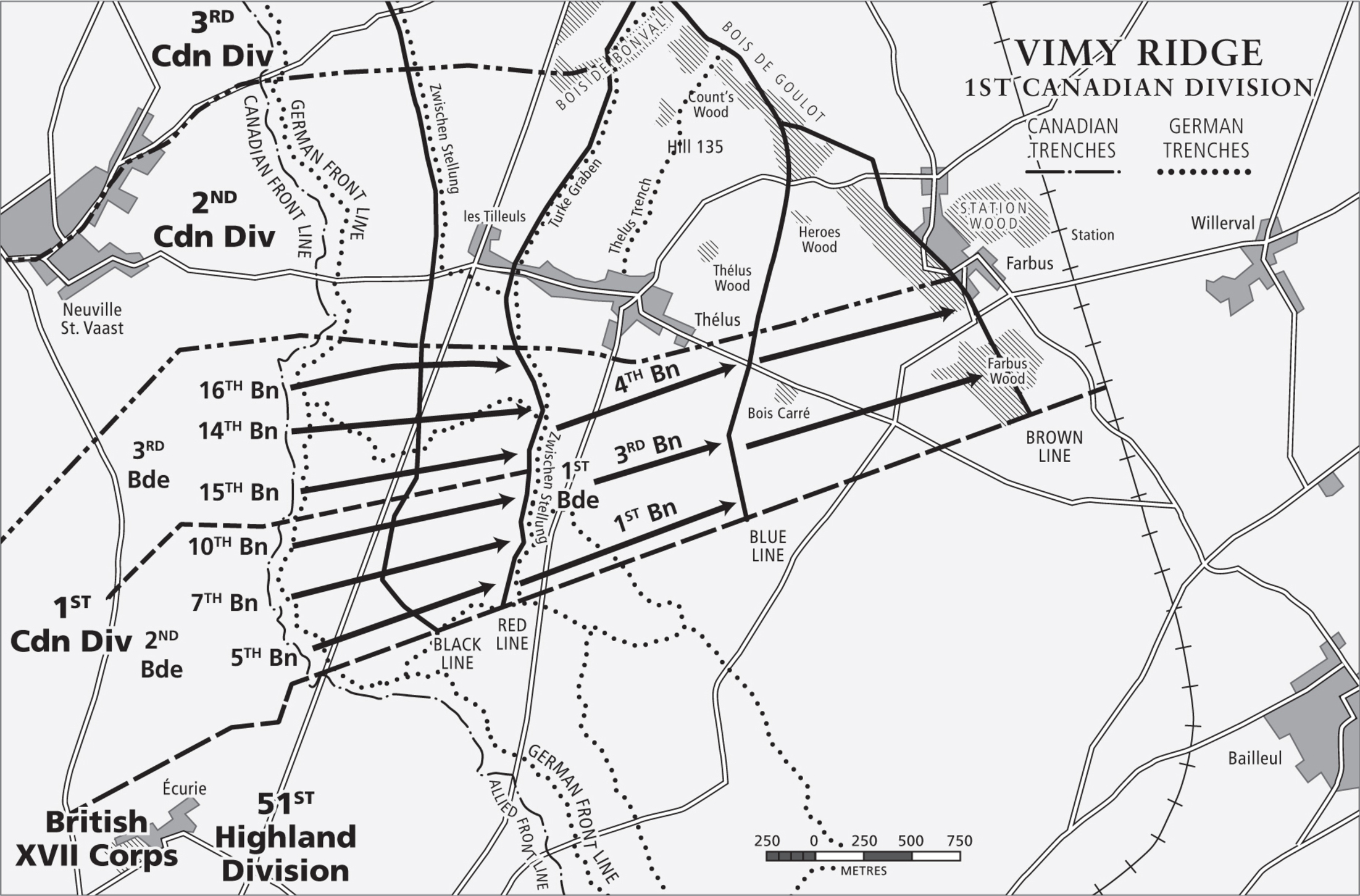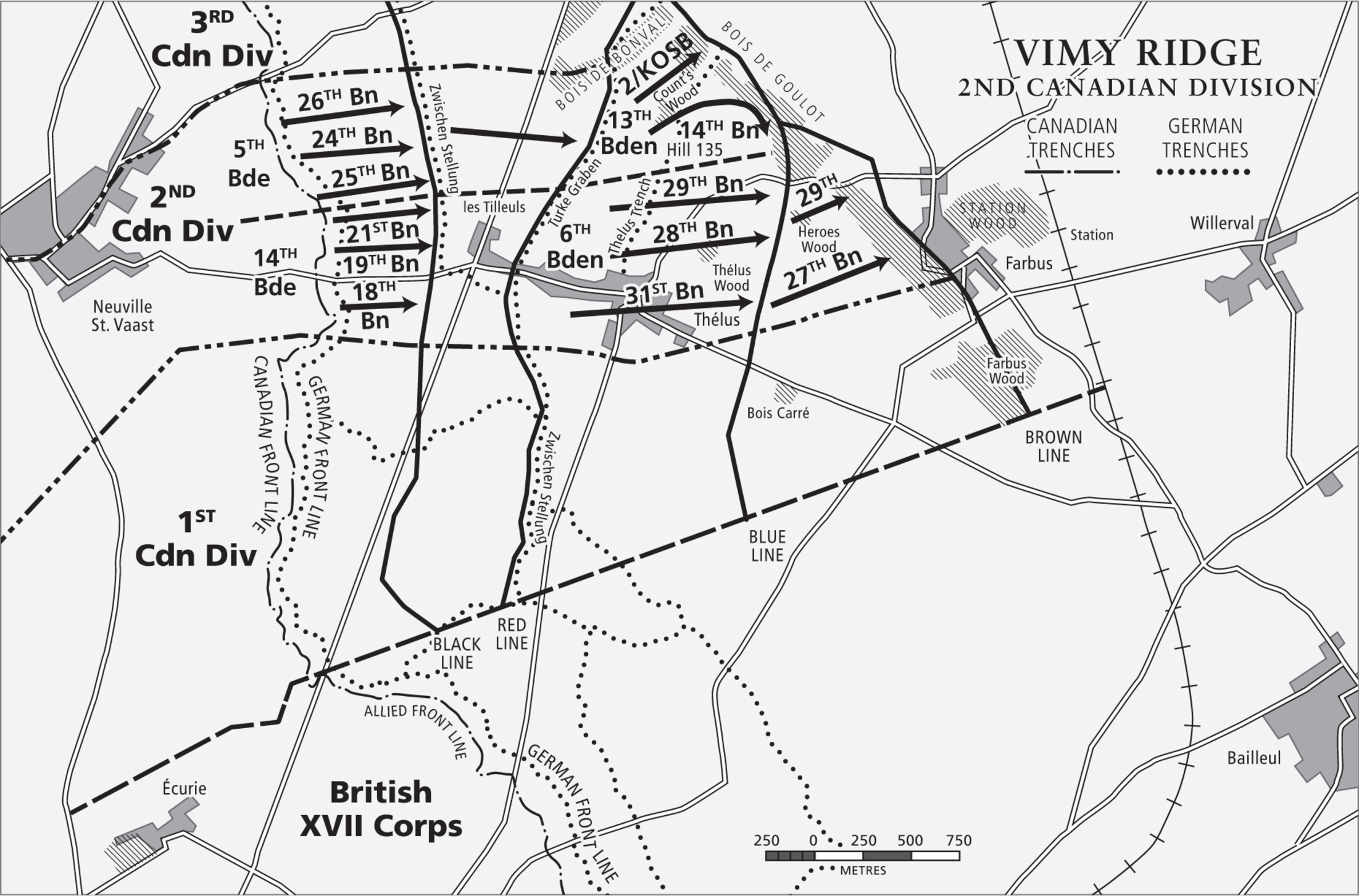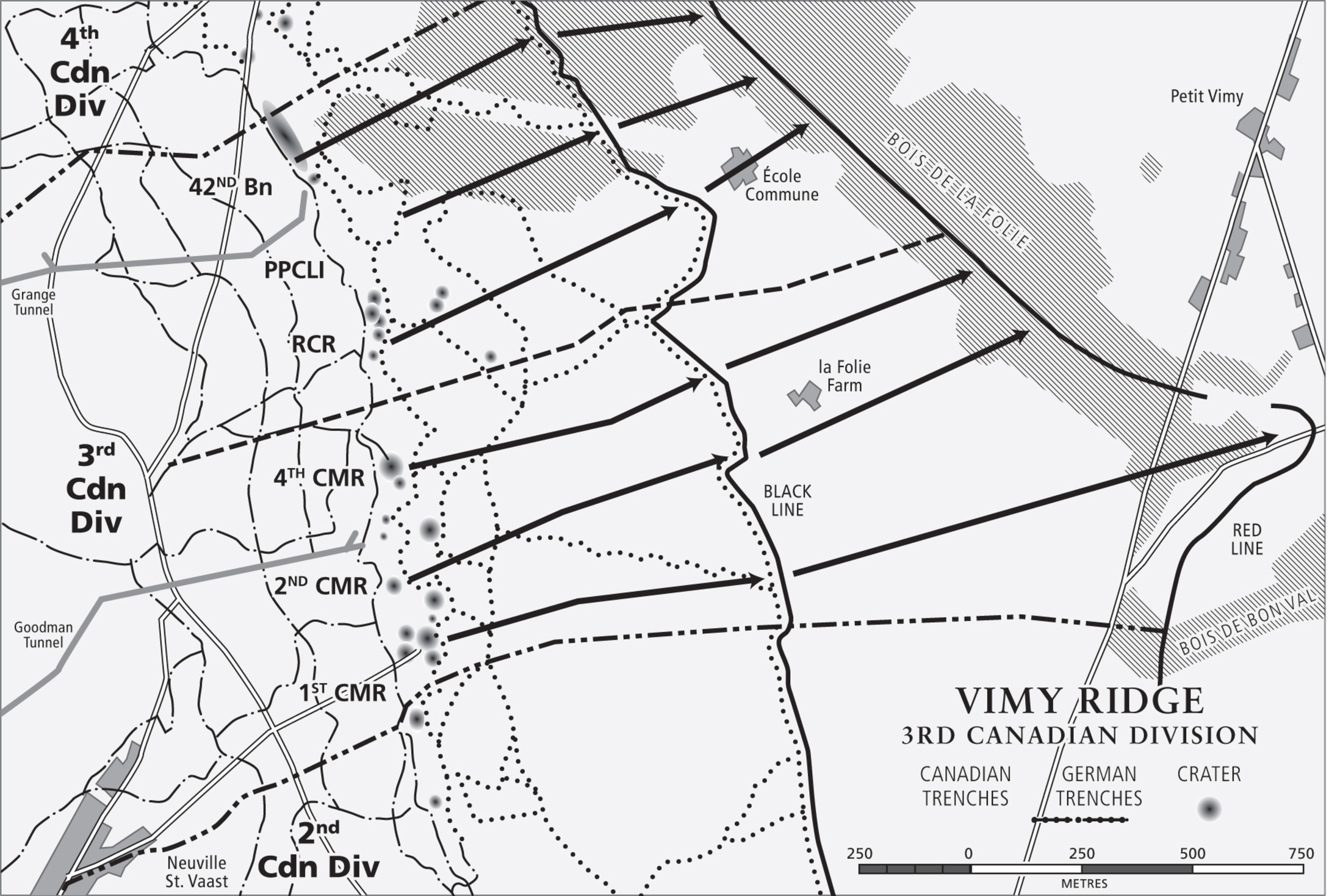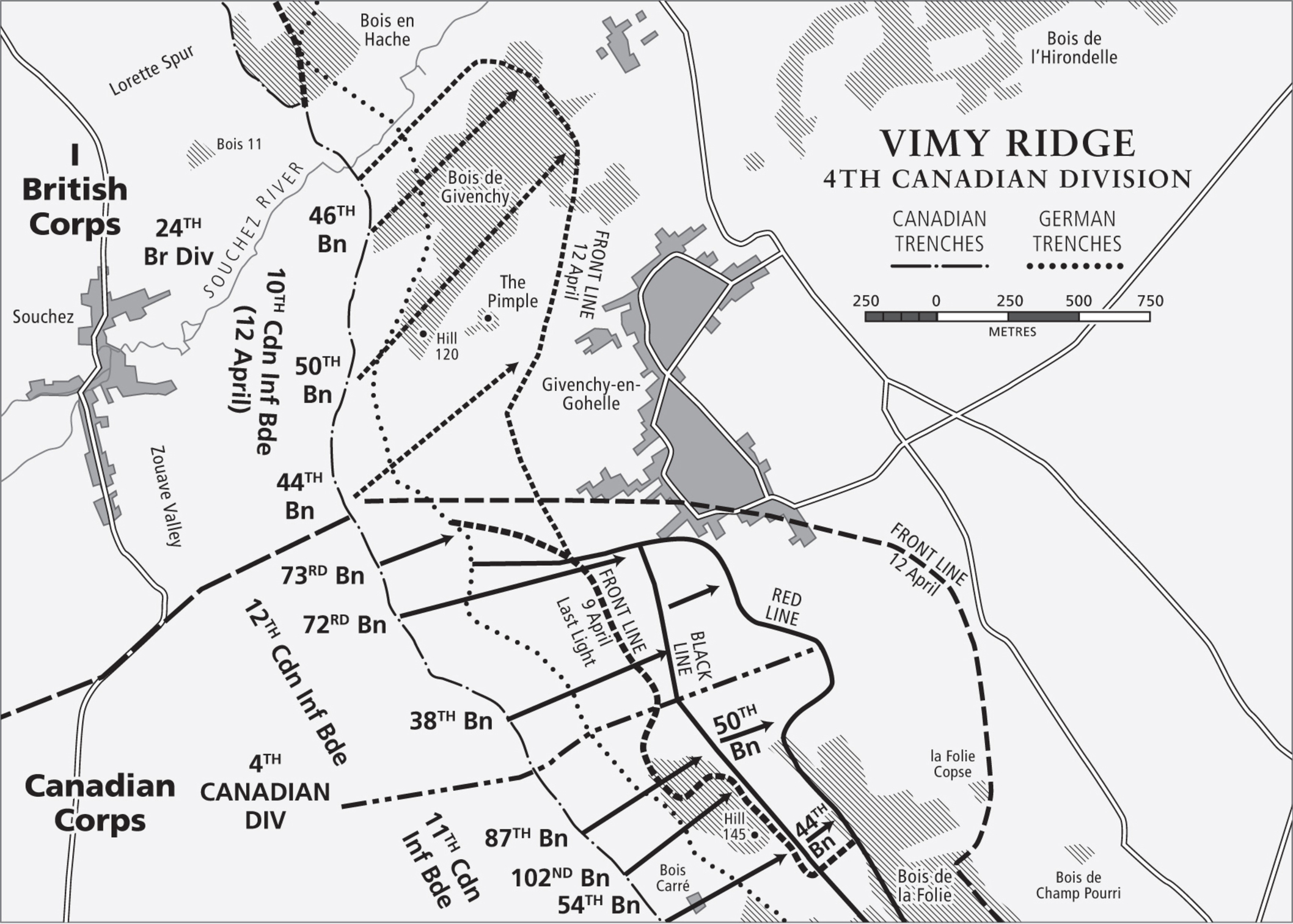Contents
ALLEN LANE
an imprint of Penguin Canada, a division of Penguin Random House Canada Limited
Canada USA UK Ireland Australia
New Zealand India South Africa China
First published 2017
Copyright 2017 by Tim Cook
All rights reserved. Without limiting the rights under copyright reserved above, no part of this publication may be reproduced, stored in or introduced into a retrieval system, or transmitted in any form or by any means (electronic, mechanical, photocopying, recording or otherwise), without the prior written permission of both the copyright owner and the above publisher of this book.
www.penguinrandomhouse.ca
LIBRARY AND ARCHIVES CANADA CATALOGUING IN PUBLICATION
Cook, Tim, 1971-, author
Vimy : the battle and the legend / Tim Cook.
ISBN 9780735233164 (hardback)
ISBN 9780735233171 (electronic)
1. Vimy Ridge, Battle of, France, 1917.
2. World War, 1914-1918Canada. I. Title.
D545.V5 C66 2017940.431C2016-904744-X
Book design by Five Seventeen
Cover image: Canada Dept. of National Defence/Library and Archives Canada
v4.1
a
Also by Tim Cook
No Place to Run
Clios Warriors
At the Sharp End:
Canadians Fighting the Great War,
19141916, Volume One
Shock Troops:
Canadians Fighting the Great War,
19171918, Volume Two
The Madman and the Butcher:
The Sensational Wars of Sam Hughes
and General Arthur Currie
Warlords: Borden, Mackenzie King,
and Canadas World Wars
The Necessary War:
Canadians Fighting the Second World War,
19391943, Volume One
Fight to the Finish:
Canadians in the Second World War,
19441945, Volume Two
This book is dedicated to my father, Dr. Terry Cook, who was a fine historian, a world-renowned archivist, and an even better dad.
CONTENTS
CHAPTER 1
VIMY: BATTLE AND LEGEND
T he Vimy Memorial, with its white, almost luminescent stone, stands on the ramparts of a ridge in northeastern France, a site of mass killing and myth-making. In a painting called The Ghosts of Vimy Ridge that hangs in the Parliament Buildings in Ottawa, the twin pylons reach into the night. The effect is of two swords raised, or perhaps the tip of a cross emerging from a large crossbeam. From the east, the view captures the shattered landscape of mud and shell craters that leads up to the memorials stone wall, which appears immovable and permanent, a bulwark against invaders and time. Returning to the memorial are the ghosts of soldiers. They are Canadian, although many more French and German soldiers died trying to capture or hold the ridge, more than 150,000. Yet in April 1917, it was the Canadian CorpsCanadas 100,000-strong army in the Great War from 1914 to 1918that assaulted the seemingly impregnable position and delivered victory. It cost close to 3,600 Canadian lives during the four-day battle that raged from April 9 to 12.
Painted in 1929 by Australian artist Will Longstaff, The Ghosts of Vimy Ridge depicts the memorial seven years before it was completed and unveiled. In the foreground, and surrounding the memorial, is a lunar landscape of death and destruction from April 1917. Longstaff painted the wasteland of the battle, but combined it with the future stone memorial of 1936, and he populated it with the spectral figures of fallen soldiers. The past bleeds into the present and interlaces through the future. Vimy has been reframed, reconstructed, and reimagined over time. The presence of the soldiers ghosts symbolizes the constant return of Canadians to this site of memory and meaning that haunts our history, culture, and society.
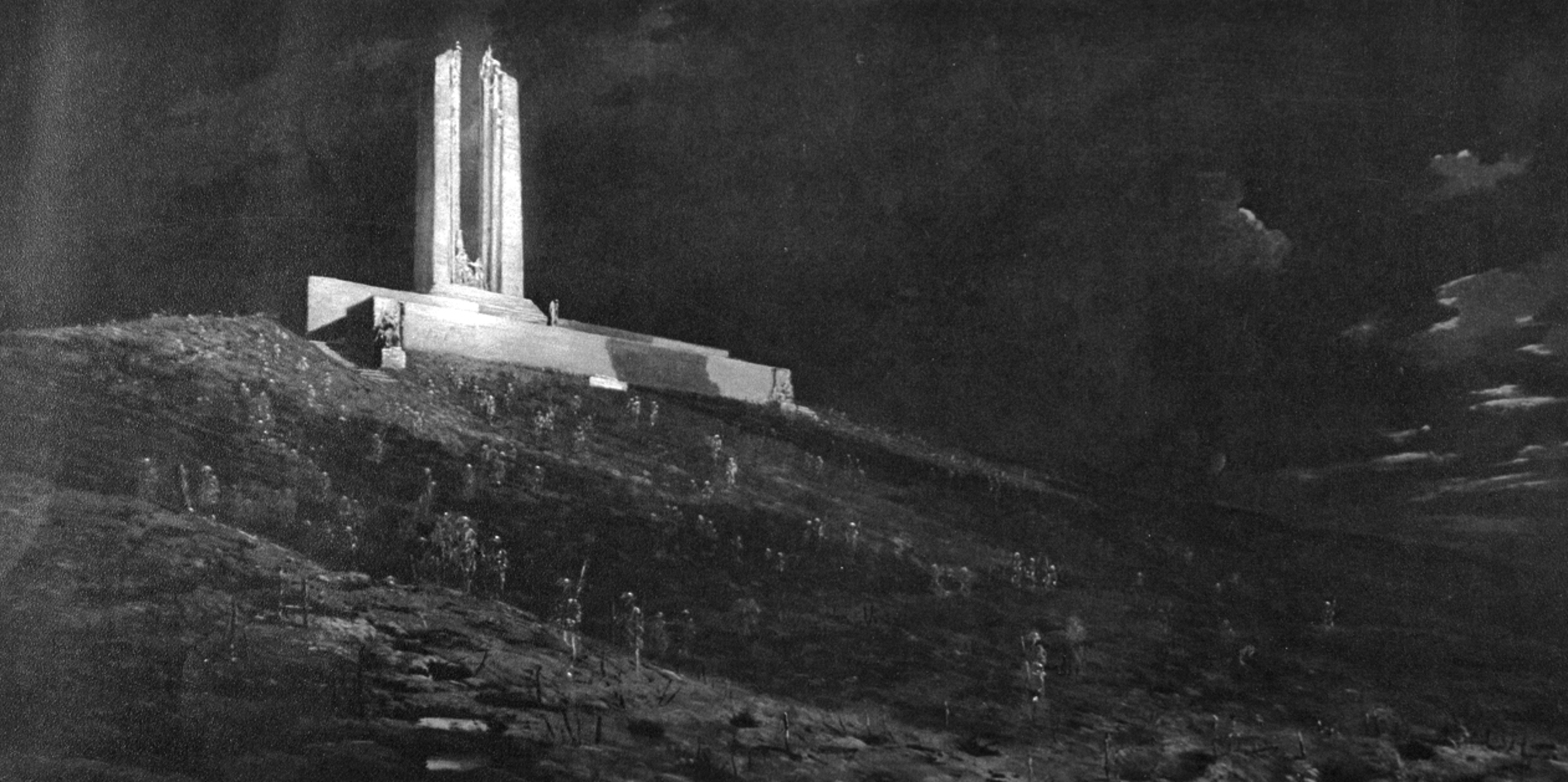

Lieutenant Edward Sawell of the 20th Battalion, from Millgrove, Ontario, wrote in his diary on April 9, 1917, the first day of the Vimy Battle, Canadian soldiers this day, did more to give Canada a real standing among nations of the world than any previous single act in Canadian history. Sawell would survive the war while Willmot never made it home to his family, but, for them both, Vimy resonated as more than just a battlefield achievement. They were certain that the battle would live on in Canadian history. Over the last 100 years, Vimy has become part of the fabric and fable of the nation, though some generations have invested more energy in the symbolism of this historical moment than others, and it resonates far more strongly in English Canada than in French.
THE CANADIAN CORPS WAS TO WIN other outstanding victories, but none so caught the popular imagination or were so peculiarly identified with Canada as the taking of Vimy Ridge. As is usually the case in such matters, the popular instinct was absolutely right. No matter what constitutional historians may say, it was on Easter Monday, April 9, 1917, and not on any other date, that Canada became a nation. Historian Donald Goodspeed wrote these words in 1969, and he was not alone in believing that Vimy marked, to use a widespread phrase, the birth of the nation. Yet how did a four-day battle at the midpoint of the war, which had little strategic impact on the larger direction of the Allied war effort, become elevated to a national symbol of Canadas war effort and the nations very beginning?



